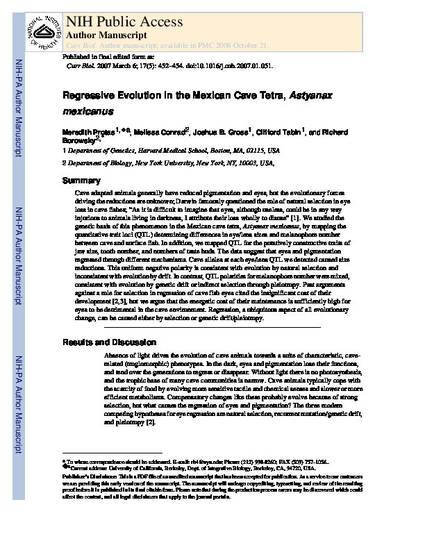
Cave adapted animals generally have reduced pigmentation and eyes, but the evolutionary forces driving the reductions are unknown; Darwin famously questioned the role of natural selection in eye loss in cave fishes; “As it is difficult to imagine that eyes, although useless, could be in any way injurious to animals living in darkness, I attribute their loss wholly to disuse” [1]. We studied the genetic basis of this phenomenon in the Mexican cave tetra, Astyanax mexicanus, by mapping the quantitative trait loci (QTL) determining differences in eye/lens sizes and melanophore number between cave and surface fish. In addition, we mapped QTL for the putatively constructive traits of jaw size, tooth number, and numbers of taste buds. The data suggest that eyes and pigmentation regressed through different mechanisms. Cave alleles at each eye/lens QTL we detected caused size reductions. This uniform negative polarity is consistent with evolution by natural selection and inconsistent with evolution by drift. In contrast, QTL polarities for melanophore number were mixed, consistent with evolution by genetic drift or indirect selection through pleiotropy. Past arguments against a role for selection in regression of cave fish eyes cited the insignificant cost of their development [2,3], but we argue that the energetic cost of their maintenance is sufficiently high for eyes to be detrimental in the cave environment. Regression, a ubiquitous aspect of all evolutionary change, can be caused either by selection or genetic drift/pleiotropy.
Copyright © 2007 Elsevier Publishing. All rights reserved.
Available at: http://works.bepress.com/meredith-protas/5/
